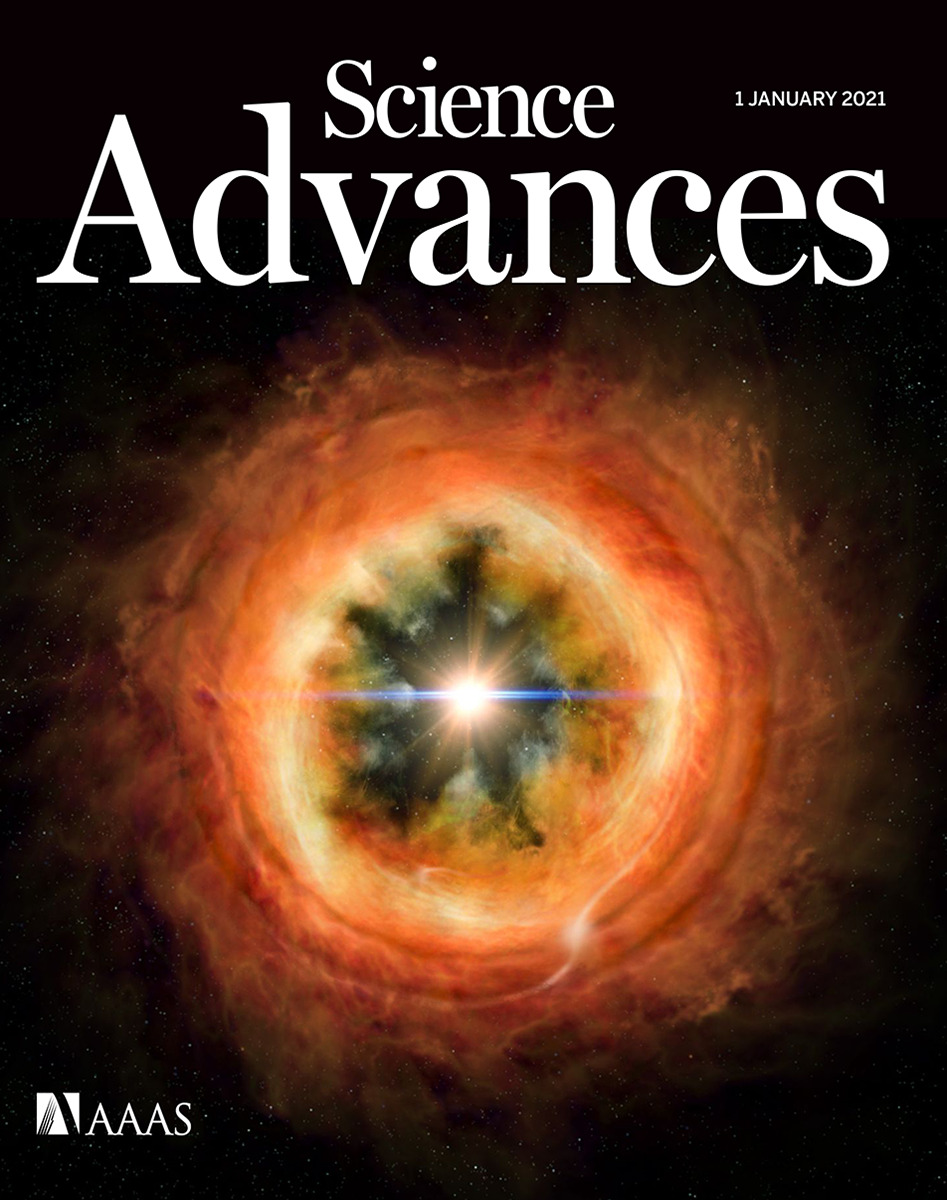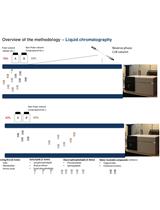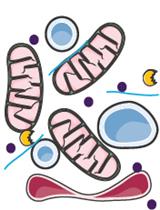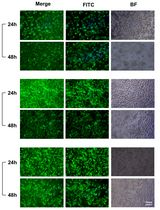- EN - English
- CN - 中文
Isolation and Phospholipid Enrichment of Muscle Mitochondria and Mitoplasts
肌肉线粒体和有丝分裂体的分离和磷脂富集
发布: 2021年10月20日第11卷第20期 DOI: 10.21769/BioProtoc.4201 浏览次数: 3080
评审: David TaresteElizabeth CalzadaAnonymous reviewer(s)
Abstract
The efficient ATP production in mitochondria relies on the highly specific organization of its double membrane. Notably, the inner mitochondrial membrane (IMM) displays a massive surface extension through its folding into cristae, along which concentrate respiratory complexes and oligomers of the ATP synthase. Evidence has accumulated to highlight the importance of a specific phospholipid composition of the IMM to support mitochondrial oxidative phosphorylation. Contribution of specific phospholipids to mitochondrial ATP production is classically studied by modulating the activity of enzymes involved in their synthesis, but the interconnection of phospholipid synthesis pathways often impedes the determination of the precise role of each phospholipid. Here, we describe a protocol to specifically enrich mitochondrial membranes with cardiolipin or phosphatidylcholine, as well as a fluorescence-based method to quantify phospholipid enrichment. This method, based on the fusion of lipid vesicles with isolated mitochondria, may further allow a precise evaluation of phospholipid contribution to mitochondrial functions.
Keywords: Cardiolipin (心磷脂)Background
Membranes in living cells are more than just barriers; they are also the sites of many important biological processes. Phospholipids are key membrane components, and by controlling membrane fluidity, permeability, rigidity, and morphology, they can modulate important functions. In eukaryote cells, mitochondria are at the crossroad of many cellular processes, including ATP production and apoptosis, and are altered in different diseases. Two membranes with different levels of permeability and unique phospholipid composition constitute their envelope. In particular, the inner mitochondrial membrane (IMM) is characterized by the presence of long invaginations called “cristae” that are enriched in cardiolipin (CL), a specific mitochondrial phospholipid. CL is established as a crucial actor of mitochondrial architecture and ATP production (Paradies et al., 2014; Ikon and Ryan 2017a; Schlame et al., 2017; Pennington et al., 2019), and alteration of CL synthesis or content may result in the development of the Barth syndrome, a rare, life-threatening cardiomyopathy (Barth et al., 1983; Ikon et al., 2017b), or skeletal muscle weakness (Prola et al., 2021). More recently, a tight regulation of other phospholipids such as phosphatidic acid or phosphatidylethanolamine has been shown to be essential for mitochondrial function (Adachi et al., 2016; Heden et al., 2019). However, the roles of phospholipids in mitochondrial function have mostly been identified through the mutation of genes involved in their synthesis, and this indirect approach might lead to biases. For example, knockout of the tafazzin gene to study the role of CL is not only associated with a drop in mature CL content, but also with a strong enrichment of unmatured CL (monolyso- and dilyso-CL) that impairs mitochondrial function. Thus, complementary methods to study the role of phospholipids in mitochondrial function are needed. Previous publications used different methods to enrich mitochondria with CL, phosphatidylserine, or phosphatidylglycerol, but the validation of the enrichment and a complete description of the protocols used are lacking (Bobyleva et al., 1997; Piccotti et al., 2002). Here, we describe a new method that we used to demonstrate the direct, key role of CL in the control of mitochondrial coupling in skeletal muscle (Prola et al., 2021). This method relies on the fusion of lipid vesicles with isolated mitochondria to enrich mitochondrial membranes with a single phospholipid. Below, we will discuss details of the protocol set up in our laboratory and also present our post-experimental data analysis and quality control workflow.
Materials and Reagents
Cell strainer (100 µm, Greiner Bio-One)
50 ml centrifuge tube (Falcon)
Strengthened centrifuge 15 ml glass tube (Kimble Chase, catalog number: 45500)
Glass Pasteur pipette (Dutscher, catalog number: 065421)
1.5 ml and 2 ml Microtubes (Eppendorf)
Pipette tips (Star Lab)
96-well plate (black, µclear flat bottom; Greiner, catalog number: 655096)
Acridine Orange 10-Nonyl Bromide (Sigma, catalog number: A7847)
Adenosine 5′-diphosphate monopotassium salt dihydrate (Sigma, catalog number: A5285)
Bicinchoninic acid assay (Pierce, Invitrogen, catalog number: 23225)
Bovine serum albumin (fatty acid free; Sigma, catalog number: A7030)
Cardiolipin sodium salt from bovine Heart (chloroform solution; Avanti Polar Lipids, catalog number: 840012C)
Chloroform (Sigma, catalog number: 288306)
Digitonin (Sigma, catalog number: D5628)
Dimethyl sulfoxide (Sigma, catalog number: D8418)
Ethylene-bis(oxyethylenenitrilo)tetraacetic acid (EGTA) (Sigma, catalog number: 03777)
Ethylenediaminetetraacetic acid tetrasodium salt dihydrate (EDTA) (Sigma, catalog number: E6511)
Formaldehyde solution 36% (Sigma, catalog number: 47608)
Glutamate (Sigma, catalog number: G1501)
HEPES (Sigma, catalog number: H3375)
Magnesium Chloride (MgCl2 1 M solution; Sigma, catalog number: 63069)
Malate (Sigma, catalog number: M6413)
Mannitol (Sigma, catalog number: M8429)
Methanol (Sigma, catalog number: 34860)
MitoTrackerTM Red CMXRos (Invitrogen, catalog number: M7512)
PBS (Sigma, catalog number: P4417)
L-α-phosphatidylcholine (95%) (Egg, Chicken, chloroform solution) (Sigma, catalog number: 131601C)
Potassium Phosphate monobasic (KH2PO4; Sigma, catalog number: P5655)
Pyruvate (Sigma, catalog number: P2256)
Sucrose (Sigma, catalog number: S0389)
Texas RedTM 1,2-Dihexadecanoyl-sn-Glycero-3-Phosphoethanolamine, Triethylammonium Salt (Thermofischer, catalog number: T1395MP)
TopFluor® Cardiolipin (Avanti Polar Lipids, catalog number: 810286)
Tris-HCl (Sigma, catalog number: T5941)
Trypsin EDTA (10×) 0.5%/0.2% in DPBS (PAA Laboratories, catalog number: L11-003)
Mouse anti-COXIV antibody (Abcam, catalog number: ab14744)
Rabbit anti-β-tubulin antibody (Cell Signaling, catalog number: 2128)
Rabbit anti-Calnexin antibody (Sigma, catalog number: C4731)
Mouse anti-eIF2α antibody (Cell Signaling, catalog number: 2103)
Rabbit anti-Insulin Receptor β antibody (Cell signaling, catalog number: 3025)
Rabbit anti-MFF antibody (Abcam, catalog number: ab129075)
Rabbit anti-TBP antibody (Cell Signaling, catalog number: 8515)
Rabbit anti-VDAC antibody (Custom made, a kind gift from Dr. C. Lemaire, Inserm U1180)
Mitochondria Homogenization Buffer (MHB) (see Recipes)
Mitochondria Isolation Buffer (MIB) (see Recipes)
ADP solution (see Recipes)
Fusion buffer (see Recipes)
10× BSA solution (see Recipes)
Digitonin solution (see Recipes)
Mitoplast Preparation Buffer (MPB) (see Recipes)
Hypotonic Mitoplast Preparation Buffer (HMPB) (see Recipes)
Mitotracker Red 1 mM stock solution (see Recipes)
Formaldehyde 2% (see Recipes)
Nonyl-acridine orange 35 mM stock solution (see Recipes)
Equipment
Centrifuge (Eppendorf, model: 5810R with rotor FA-45-6-30)
Dounce, 2 ml (Kimble, Type A, catalog number: 885300-0002)
Hamilton syringe 500 µl (ThermoFischer, catalog number: 10570042)
Nitrogen or argon gas bottle, or medical gas installation with pressure regulator
Non-CO2 incubator (Memmert, catalog number: D06057, Model 100)
MACSMIX Tube rotator (Miltenyi, catalog number: 130-090-753)
Spectrofluorimeter (TECAN, model: Infinite M200)
Sonicator bath (Branson, catalog number: 3510)
Zeiss LSM800 confocal (Zeiss, model: LSM800)
Water bath
Software
Prism 8 (GraphPad Software, www.graphpad.com)
Software Magellan (TECAN)
Zen (Zeiss)
Procedure
文章信息
版权信息
© 2021 The Authors; exclusive licensee Bio-protocol LLC.
如何引用
Readers should cite both the Bio-protocol article and the original research article where this protocol was used:
- Prola, A., Vandestienne, A., Baroudi, N., Joubert, F., Tiret, L. and Pilot-Storck, F. (2021). Isolation and Phospholipid Enrichment of Muscle Mitochondria and Mitoplasts. Bio-protocol 11(20): e4201. DOI: 10.21769/BioProtoc.4201.
- Prola, A., Blondelle, J., Vandestienne, A., Piquereau, J., Denis, R. G. P., Guyot, S., Chauvin, H., Mourier, A., Maurer, M., Henry, C., et al. (2021). Cardiolipin content controls mitochondrial coupling and energetic efficiency in muscle. Sci Adv 7(1): eabd6322.
分类
神经科学 > 细胞机理 > 线粒体
生物化学 > 脂质 > 脂质分离
您对这篇实验方法有问题吗?
在此处发布您的问题,我们将邀请本文作者来回答。同时,我们会将您的问题发布到Bio-protocol Exchange,以便寻求社区成员的帮助。
Share
Bluesky
X
Copy link














